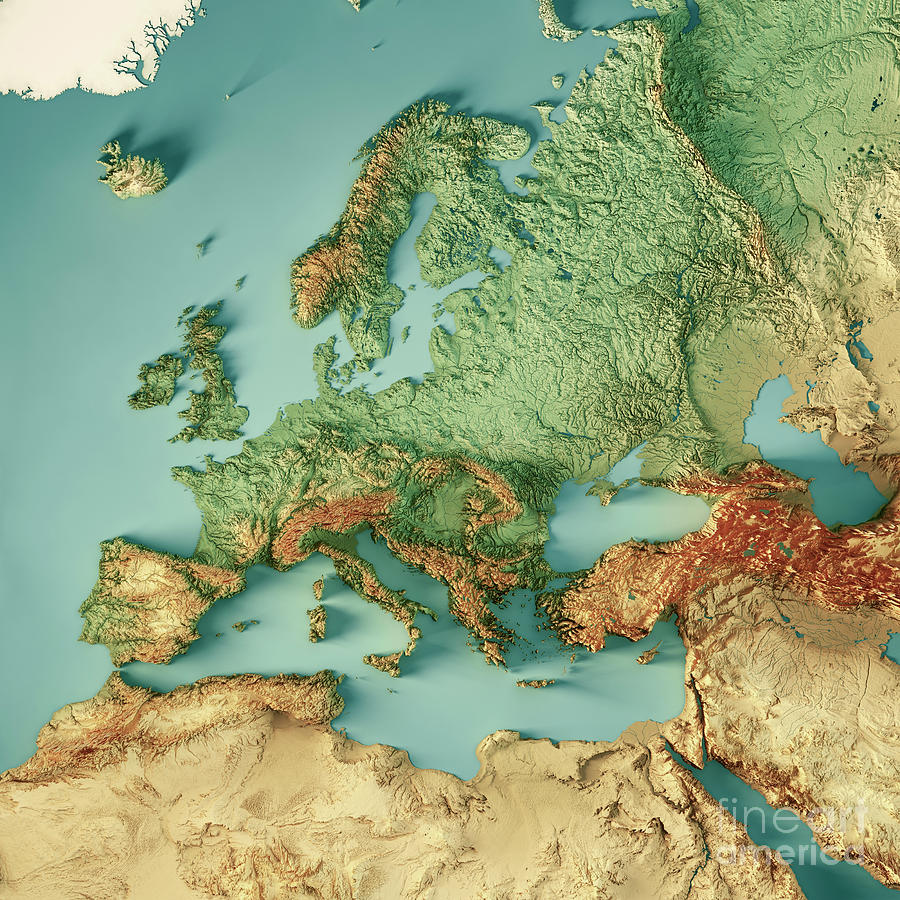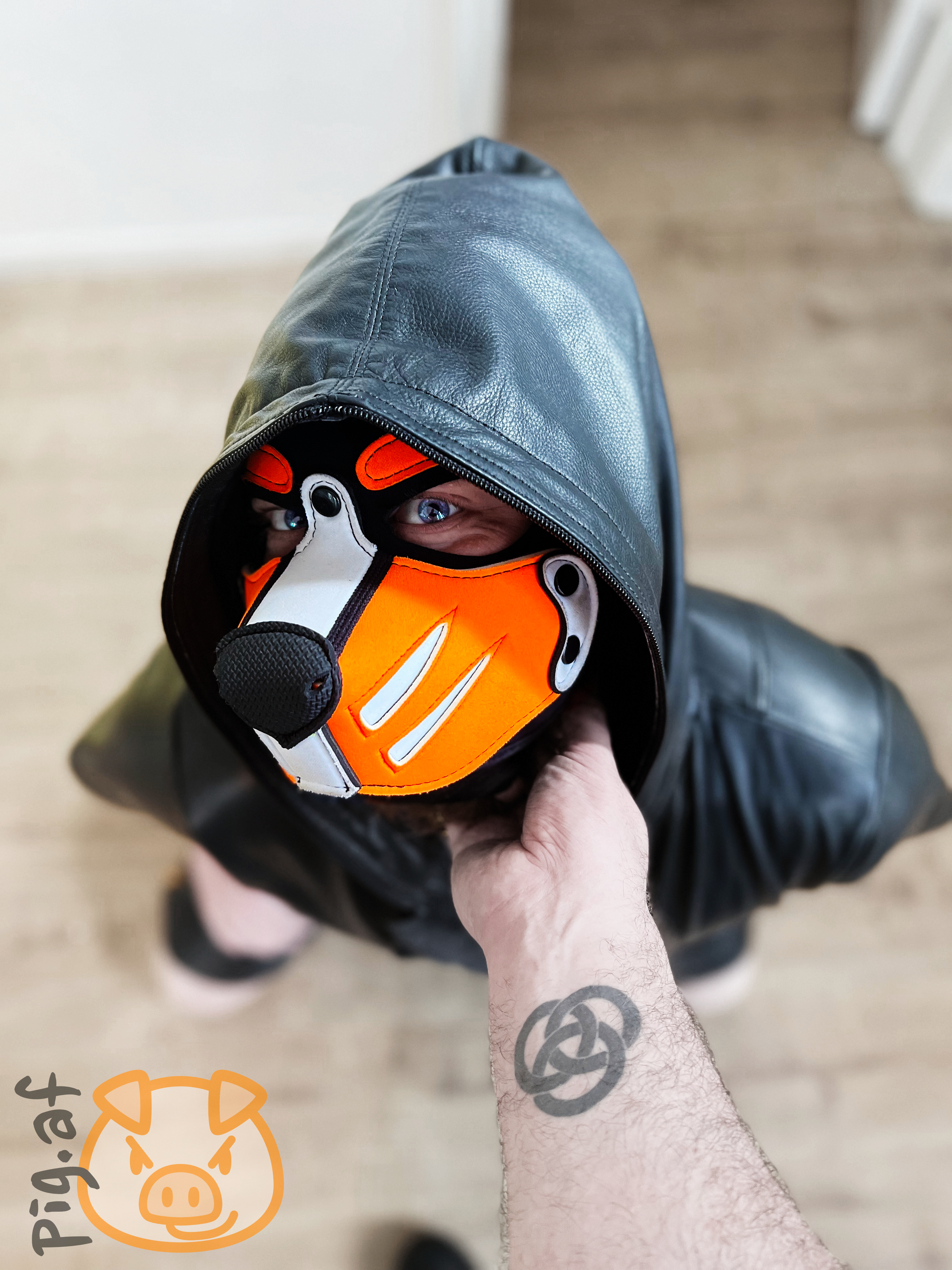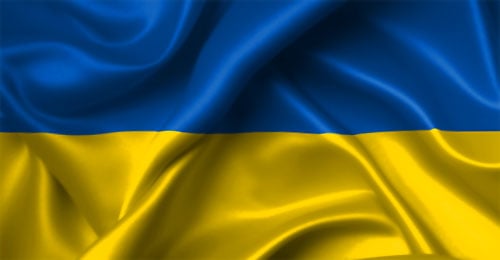Daniel Fahrenheit was a German Physicist!
And a Fahrenheit is 1/100 the temperature difference between frozen salt brine and Mrs Fahrenheit’s armpit. Also the answer to how hot it is outside on a scale from 0-100.
Daniel Fahrenheit invented the mercury thermometer.
He wanted 0°F to be as cold as he could create and duplicate. Frozen salt brine.
100°F just happened to be very close to body temperature.
Celcius came after and just stated that at 100°C water froze at 1 atmosphere. 0°C was boiling.
Since then, it’s been changed to 0°C being the freezing point.
Also, Celcius is now based on Kelvin. 0K is -273.15°C
They are both outdated systems
Kelvin is the true system
Fahrenheit and Celsius are just still being used by people because they know it.
People who know Celsius think it’s easy, people who know Fahrenheit think it’s easy.
273.15K for the freezing point of water isn’t hard.
Temperature outside ranges from 250K to 310k
Room temperature is about 295K
F has 30° between 70° and 100°
C has 20° between 20° and 40°
K has 15 between 295 and 310
They are all just numbers on different scales that help represent an idea. One isn’t necessarily easier than another. 295K as room temperature would scare people, though.
Kelvin is great for math and science. But daily life? Dude. The weather does not need to be reported relative to absolute zero just like the speed of your car doesn’t need to be reported relative to the sun. Also Fahrenheit did famously use his wife’s armpit for the 100 mark that’s why it’s “close to body temperature”.
Another fun fact human body temperature has not always been 98.6 and has been getting lower.
I didn’t know about the arm pit thing.
To create a scale you have to start somewhere.
To think he measured his wife arm pit to be 100°F and then said, let me make a salt brine mix to get to 0°F. Seems completely backwards.
They had no idea about absolute 0 back then. Coldest thing you can create in a lab consistently at the time was a reasonable 0°
But that’s where the scale starts and everything is based on.
Could he have created a colder one but wanted 100° to be close to body temperature. Maybe. But that’s not weird. 0 and 100 are important numbers. Most people have an armpit and a way to calibrate their thermometer in a pinch. Axillary method, armpit, is a legit way to take someone temperature.
Fahrenheit has 2° compared to 1° of Celsius. 98, 99, 100, 101. (37, 37, 38, 38). Being 1° off in F isn’t as much of an error as being 1° off in C.
You can’t just boil water and say, that’s 100°C! Pressure matters. To boil water at standard pressure was difficult to recreate at the time. Same for freezing.
That’s the whole point of using Celsius or Fahrenheit. They are both just different representations of Kelvin. But Kelvin is absolute.
If you want your weather scale to go -20 to 40 or 0 to 100. Is debatable.
0°F to 100°F is better for weather
0°C to 100°C is better for water temperature
If you know C, there’s no need to learn F for the weather.
If you know F, there’s no reason to learn C for the weather.
You don’t need to know F or C to read a thermometer. 375°F or 190°C are just numbers you might bake cookies at. No one knows how 375°F or 190°C “feels like”
Things you need to know is if 90°F or 32°C water is safe to get in. Over 100°F is getting dangerous, Over 40°C is getting dangerous.
Normal house hot water is 50°C or 120°F.
Time to cause burns:
120°F or 50°C More than 5 minutes
130°F or 55°C About 30 seconds
140°F or 60°C Less than 5 seconds
150°F or 65°C About 1.5 seconds
160°F or 70°C About 1/2 a second
Aslong as you know a system, you’re fine. Fahrenheit isn’t like the other US customary units. It is based on the exact same thing Celsius is, Kelvin. Just shown in different numbers. Something like a quart to gallon is a completely made-up measurement and horrible.
Just use Rømer scale, it is what we use for everything.
I put my pizza in the oven at 250k with convection. How long until the crust is brown and the cheese melted?
Infinite, 250K that’s like cold AC
you need to set it closer to 500K
These instructions were the worst I JUST WANT MY PIZZAAAAAAA
Sounds like you already have it!
Bon Appétit!!!
250,000 of which unit?
Digiornos
Chad Kelvin poster. It really is a better system. 0 K is the absolute absence of energy in a system, and is a reasonable starting point to define energy and temperature.
Is it ANY armpit? Or ONLY Mrs Fahrenheits armpit?
the answer to that question is the same as whether a foot as any foot or only king henry’s……. arm
He sounds more like the square jawed hero of a series of airport novels tbh
and the online translator says it means “driving unity”.
That would be fahreinheit.
Fahrenheit is a scale of temperature that Americans don’t use for aviation.
My favorite example of mixed units is the standard adiabatic lapse rate, given as 2 degrees C per 1000 feet.
Isn’t a foot defined as 0.3048 meters anyways?
So its really a metric derivative
It starts with metric, so really it’s just the next evolution of metric
Its mors like metric came and colonized it
Keep in mind, the reason it is like this is because its cheaper to base off metric than to define the standard by your self
It’s one of the early games of the French developer Quantic Dream
Great game, great series
This developer is most known for: JASON!!!
JASON!!!
I think the last game I played from them was Omikron, what is this referring to?
The main character in Heavy rain looking for his son in a shopping mall, it’s a meme.
I don’t know, but there are at least 451 of them muthafuckas.
America: fights Germany in the war. Drinks Budweiser and measures in fahrenheit.
Budweiser is an American beer in a Czech style, so… ?
Budweiser Budvar is a Pilsner style beer brewed in České Budějovice. Whatever Anheuser-Busch sells is anything but Czech style beer and Bud Light quite possibly isn’t even a beer in certain jurisdictions.
Delusional Celsius cosplayer
Old and busted Celsius cosplayer.
Freedom Units.
I don’t know what’s so great about Fahrenheit, but for some reason, it’s the temperature system preferred by everyone who’s ever walked on the moon
The wacky Fahrenheit scale, invented by Daniel Fahrenheit 300 years ago, was based on a scale concocted by Ole Rømer, an astronomer who was the first to show that light has at a finite speed. On the Romer scale a brine solution freezes at 0 and plain water boils at 60. Why Rømer didn’t use the same substance for both measurements is a mystery. Fahrenheight divided Rømer’s degrees by 4 to make the scale finer, so in his version the brine froze at 0, normal water at 30, and human body temp was 90. These numbers had to be adjusted later as more accurate thermometers were made.
deleted by creator
Fahrenheit is better.
0 is real cold, 100 is real hot. How much sense does that make? Lots.
What the fuck is Celsius? Maybe if you are doing chemistry it is better. 0 is kind of cold but not really, 40 is real hot, 80 is unsued in practice, 100 is when water boils. Great, that’ll come in real handy the next time I need to find out whether it is boiling-water temperature or not outside. How much sense does that make? 0. Which is the right number to use for roughly the bottom of the scale.
For everything else, the US’s medieval “how many hogsheads in a farthing” units are far inferior, I will 100% agree. Fahrenheit is better though. If you disagree then why not just use Kelvin, that’s even more chemically accurate and even less related to human relevant temperatures which is the goal I guess.
I might not agree with you but I respect you for taking the defense of the freedom units on a yuropean post.
RIP we will bury your mangled corpse 182.88 centimeters under ground.
Kudos for the six-feet under joke!
Yeah I already understood what would happen and it is happening lol.
Like Opus said, if a million people do a stupid thing, it is still a stupid thing.
if a million people do a stupid thing, it is still a stupid thing.
The only non-tiny countries exclusively using Fahrenheit are the US and…drum roll…Liberia.
So globally roughly 385 million (Fahrenheit) versus 7,700 million (Celsius).

Fine if 7,700 million people do something stupid, it’s still stupid
We just use one measurement scale for temperature. You use 2. Unnecessary for no real reason.
What the fuck is Celsius?
Celsius is the temperature scale of water.
One milliliter of water occupies one cubic centimeter, weighs one gram, and requires one calorie of energy to heat up by one degree Celsius; which is one percent of the difference between its freezing point and its boiling point.
100 to 1 relation kinda breaks the beauty a bit. But yeah, metric system is easy.
It’s still convenient not due to some inherent laws, but because it was designed to be that.
So people used to counting non-trivial things in non-metric systems might a bit better understand what they are thinking about.
Also, eh, the obvious forgotten trait, 0 by Celsius being the freezing temperature (of some ideally clean distilled water, not really) is very convenient. 20 deg - normally hot, 15 deg - kinda normal, 10 deg - a bit chill, 5 deg - chill, 0 deg - definitely should wear more than a t-shirt, -5 deg - boring winter, -10 deg - crisp winter, -15 deg - good winter, -20 deg - how winter should be. The symmetry.
There’s never gonna be a universally good unit for energy. Calories work well for heat, watt hours for stored or metered electrical energy, even electron volts for certain quantum physics. Plus the actual SI standard of joules.
Hate to break it to you, but I am not one cubic centimeter of water though
You’re more water than anything else though. Well, unless you ask a nuclear physicist. They’d say you’re more empty space than anything else. Don’t get me started on quantum physicists.
Water is the most important resource for you that you have to put effort into using.
The celcius measures wether your water is frozen outside or not. Wether you are going to break your bones walking and crash your car or not.
You also use high end to measure weather the water is now safe to drink or not. If you can make tea or coffee with it or not. How you brew espresso and how close it is to steam.
Beyond that its random number nonsense where you hard memorize numbers and properties like farenheit, except celsius has 0 and 100 in places that you use every day. And it plays well with other units of measurments.
Bit at the end of the day the people saying farenheit is good are the people who said trump is the best president.
Except 100 C isn’t the boiling point, it’s 99.97 C, and that is only accurate if you define in an arbitrary pressure of 1 bar, which is defined as “Do not use” and was eventually stuffed into a measurement as dumb as the mile: 101325 Pa.
That’s true. Fahrenheit is just as flawed. It was originally created so 0° was the freezing temperature of brine (an inconsistent solution) and 100° as the average internal human body temperature (actually 98.6°).
Skill issue/culture dependent
For me: < 0 ice out, 1-10 chilly, 11-20 comfy, 21-30 warm, > 30 hot.
Simple as
Celsius 🇪🇺🇪🇺🇪🇺🦅🦅🦅🦅
No, it’s not better. Nor is it worse per see, it’s just a matter of being used to it. The advantage of using Celsius in day to day stuff is just that I don’t need to learn and convert two different scales. Because we all do chemistry every day (unless you don’t cook. In that case, learn to cook, it’s quite the skill).
I’ll counter the cooking argument with the following; you already have to learn different measurements even if it’s all nominally in Celsius degrees because cooking temperatures and ambient temperatures do not overlap. That there’s no real reason a degree in the same unit is helpful when knowing 30 degrees C is “hot” and chicken needs to be cooked to 74 degrees C, or bread at 190. They are already different things.
I have no idea how your mind works, but just because those margins don’t overlap doesn’t mean they’re not on the same scale. That’s just not how scales and math work.
I’m saying there is literally zero advantage to ambient temperature and cooking temperature being on the same scale. There’s no actionable information gained by knowing that shorts weather is 20C and chicken needs to be cooked to 74C. You wouldn’t ever, say, need to increase the temperature of chicken 54C because it is 20C out. They are mathematically on the same scale, and can use the same units of measurement, but if they do it’s coincidental. Effectively they are different things.
I wouldn’t advocate for a different system of ambient temperature measurement but for the fact that Fahrenheit already exists. I feel confident that I’ve outlined pragmatic advantages, more than simply “I’m used to it.”
I do pastry with butter, and pralines (chocolate bonbons), the ambiant temperature and the temperature of the products are very highly correlated.
It makes a huge difference if i’m trying to make the same recipe in a somewhat controlled environment during the winter when the thermostat regulates the temperature, and during the warm summer months where it can be easily 5 to 8 degrees warmer in the kitchen (no A/C in my house).
No doubt, ambient temperature can make a difference, especially in baking. I’m glad you brought up that point. But I guess what I’m saying is that it is not a direct 1:1 comparison. If it’s 5° warmer in your house and you have to add 5° to the final cooking temperature, that would be a direct correlation but if you’re saying it’s 5° hotter in your house therefore you need to bake something for x% longer, the scale at which you measured your home temperature is immaterial.
that’s true, for that purpose it’s not relevant, i put the oven on the desired target temperature and it will heat up to that point, independently of the ambiant temperature
I’m saying there is literally zero advantage to ambient temperature and cooking temperature being on the same scale.
But there’s also no disadvantage. Also, we’re measuring more temperatures than just weather and cooking. And having everything on the same scale makes it just convenient and relatable to each other. We have a feeling for what’s hot and what not just by seeing a number, because we know and use that scale for everything.
wouldn’t advocate for a different system of ambient temperature measurement but for the fact that Fahrenheit already exists.
I mean, I grew up on Celsius and never came into contact with Fahrenheit before the age of 17 or something. It didn’t exist to me before that, I had no disadvantage before knowing it existed, nothing was missing, etc.
I feel confident that I’ve outlined pragmatic advantages, more than simply “I’m used to it.”
Cannot confirm.
I get what you’re trying to say, and I don’t fully disagree with you. But your point about what a temperature “feels” like actually illustrates my point. We both know what a ten degree swing feels like in our respective measurements, but I would say that that feeling means nothing in regard to 10° difference in cooking temperatures. The feeling you would use to know if your steak is overdone or underdone is not the same feeling as it being shorts weather versus sweater weather.
But your point about what a temperature “feels” like actually illustrates my point.
How so? By “having a feeling” I don’t mean a sensing way but an estimate.
Also by your logic we should use a different scale for almost any other purpose. Different materials have different rates of heat transfer and therefore feel (in the sensing way this time) different at the same temperature. 27°C for water temperature feels much colder than 27°C of air temperature and the difference is so vast, most people consider the former too cold to be in and the latter very warm to even hot. So do you want to apply different scales to water and air/weather? Or is it more convenient to just have one temperature scale and get used to things being sensed a little different?
Btw, you’re not gonna convince me that Fahrenheit is better for any purpose. It doesn’t matter which scale we use because we don’t convert. The metric system is superior for weight and distances and such because we are constantly converting from centimetres/inches to metres/feet/yards to kilometres/miles, from gram/ounces to kilogram/pounds to tons/(idk what the imperial equivalent of tons is), from millilitres/ounces (again??) to litres/gallons (and don’t get me started on cups and shit in your kitchens), all the way up and down all day everyday.
We don’t do that with temperature. Ergo it doesn’t matter which scale we use as long as we’re used to it and can handle it.
It is very useful to know that you can cook a chicken in a sauna. Checkmate.
But seriously it is because it is easier to just use international standard for everything.
Imagine the carnage of every single country having their own definition of a mile. (Every single country has their own definition, but that pain is (almost) gone thanks to km.)
There are just 8 different temperature systems on Wikipedia.
https://en.m.wikipedia.org/wiki/Conversion_of_scales_of_temperature __ Why does it need to be more complicated than necessary?
It just boils down down to which you’ve grown up with. You’re so used to using F it just seems obvious, but at least to me, the numbers seem a bit random and arbitrary.
But I know that 0C is literally freezing out and that the roads and pavements could be icy. And I also know that 30C is a very hot day (to me) just through experience and not knowing any other scale and being exposed to C all the time.
0°F is literally freezing outside too
32°C is 90°F
90°F is a very hot day. Extremely hot is 100°F (38°C).
50°F is where you’d slowly die being naked.
75°F is room temperature
25°F water is definitely frozen
Hot tubs are 100°F
Saunas are 200°F
-20°C to 40°C
Or
0°F to 100°F
10°C is about 50°F
20°C is about 75°F
-20,(-10), 0, 10, 20, (30), 40
Or
0, (14), 25, 50, 75, (86), 100
They are both easy once you know the scale
-40° is where they both line up.
So by this logic I would expect 50F to be the perfect temperature.
It’s perfect for hiking or running. Not so much for just sitting outside in the rain.
Did you wander into the wrong neighborhood mate? Fuck that useless unit. Celsius FTW.
I dunno, Celsius is intuitive, but that’s an argument they make in favor of some imperial units. Kelvin is more logical.
Fahrenheit is just unneeded though.
-50C is real cold - about as cold as regular humans will ever be exposed to, and survive, anywhere (outside of Antarctica). +50C is real hot - about as hot as regular humans will ever be exposed to (and survive).
Nice and symmetric.
Of course there’s a little bit of flexibility in these descriptions. I believe both Baghdad and Yarkutsk have surpassed their respective “50”-lines without killing their complete populations.
Wherever a temperature is survivable depends on the humidity as well.

Statements made by the utterly deranged
I don’t know about you but I do not only use temperature in order to know if my body is hot or if outside is cold or not. I usually use temperature scales in order to know if my computer is hot, my car/bike engine, my food, water for cooking, water for showering, and sometimes since all life is water based I like to know if my food is freezed or is boling. And since at sea level water freezes at 0°C and boils at 100°C (damn how cool!), then I have an scale that I can use for weather but at the same time for everything else it’s very intuitive to use in an habitat where all life depends on water. Cook this at 120: oh okay the recipe wants me to boil water I may not even need to measure the water because when it starts boiling that’s it.
Having water as a reference is quite normal if you are going to need a scale for more than just forecasting weather, like, for everything else.
I don’t know about you but I do not only use temperature in order to know … if outside is cold or not
Yeah what maniac would care about something like that
I usually use temperature scales in order to know if my computer is hot, my car/bike engine, my food
Oh, I see, the things that everyone uses temperature for all the time. Perfect sense.
I like to know if my food is freezed or is boling
You all are doing a terrible job of selling me on Celsius here.
Try to sell me Fahrenheit…
I’ll just set my oven to “real hot times four” then.
1st time i watched a baking recipe in YouTube: Woman says, now you bake at 350 degrees. And i was, what kind of oven has she? Mine goes only up to 250… 😂
- 0: Real cold
- 100: Real hot
- 200: Low bake
- 350: Medium bake
- 450: High bake
- 1000+: Melts metal, like go wild, that’s about where off the chart starts
👍
- -20: Real cold
- 0: Water freezes, real useful if you need to know that one in your daily life and “32” is too hard to remember
- 30: Real hot (for some fucking reason)
- 90: Low bake
- 150: Medium bake
- 230: High bake
- 600+: Melts metal
😢
It’s like the exact opposite of distance units. Normally you look at the metric ones and say “thank god! It just makes sense. It’s all tens and it’s logical” and then the imperial is all wacky numbers.
With Fahrenheit you can say, “How is it outside?” “50s” / “60s” / “70s” / “80s” and it’s instantly a comprehensible answer. Maybe “low 70s” “mid 70s” if you want to be precise and you mean at an exact particular time of day. Meanwhile, the Celsius weather channels are over here putting decimals in their temperature predictions because the units are too unwieldy to even tell people what temperature it’s going to be if they have perfect integer precision. Of course, three significant digits is way too many, so they’re half making up nonsense for the one-tenths place, but they have to do it anyway. Why do they have to? Because they’re using Celsius, like a bunch of chumps.
- real cold, like actually. -30c -22f
- you can’t touch metal with your bare hands anymore: -5c 23f
- water outside freezes, water in pipes freezes destroying your pipes, roads freeze over making you fall and crash, all potentially causing thousands of damages: 0c, 32f. Kinda important for everything.
- spring/autumn weather. Minimum ambient temp for 200tw tires. 10c, 50f
—subjective temps range, few degrees here there doesn’t matter as there is basically no practical reason and every unit will have people memorize the ranges of outside weather anyway—
- Nice summer weather 20c, 68 f
- Warm summer weather 25c, 77f,
- hot summer weather 30c, 86f
–end of pointless argument zone, continuation of pointed pointless argument zone where you remember random numbers on the scale for both temps—
- yeast likes to bloom here: 40c 104f
- steak is rare 50c, 120f
- steak is medium done, fish is done and unpleasant sauna 60c, 140f,
- pork is cooked 70c,
- chicken and pork is cooked 75c, 165f
- chicken is ruined, start of espresso temperature range and bread is done. Also you can admit you enjoy sauna here and not be outcast: 90c 194f
- water changes into steam here, kinda important for literally everything. 100c, 212f
- your coolant temps are fine also nice sauna: 110c, 230f
- last warning for coolant temps also weak steam for milk frothing here. Also some people like sauna here too: 120c, 248f,
- decent steam for frothing milk 140c, google your own farenheit since not a single espresso machine uses fantasy units.
From this list I realized it does not matter whether you use farenheit or real units, since all you do is:
- find important numbers
- fudge them a bit so its rounded
- waste your brain on memorizing them or write them up.
Only practical difference other than people being used to one or another is that celcius plays well with every other unit of measurement and comes from the two most important temperatures of the most important substance for life on earth. That makes it more useful for everyone as even the most basic of no brain manual labours need to sometimes convert units.
Celsius is so unintuitive. And I just don’t get Fahrenheit…
I think Delisle degrees makes more sense
Anyways it is 180 degrees outside. When it goes all the way to 112 degrees I will definitely wear shorts.
176: real cold
93: real hot
10: low bake
-115: Medium bake
… Etc
The rest just follow the intuitive logic.
See now you’re talking sense
Sigh.
There is no temperature scale that is better than the other when it comes to how you define a comfortable temperature.
Doing that is all about what you are used to.
Arguing about weather to not the waether is hot/cold outside at 23 is just a matter of what the numbers mean to you.
Looking at science, C is better than F, simply because C uses are simpler definition, K is even better since it starts ar absolute zero.
K is however a more annoying scale to use for normal/human temps.
The C/F debate is just damn annoying at this point, neither side will be able to convince the orher that they are right.
Just learn a few basic points on the scale in the other scale.
K is however a more annoying scale to use for normal/human temps
C is just K with zero set at “it feels moderately cold.”
The definition of C has nothing to do with feelings.
Yes it does.
Fahrenheit decided that we should use a scale based on what humans feel like is the full range of sensible temperatures, with that range set to 0 through 100.
Celsius decided that we should use a scale based on what liquid water feels like is the full range of sensible temperatures, with that range set to 0 through 100.
Kelvin decided that we should use a scale based on what atoms feel like is the the full range of sensible temperatures, with that range set to 0 through NaN (exception thrown).
So, chemists the world over like to use one of a couple of different scales depending on whether they are primarily concerned with the world defined by water, or the world defined by atoms, because it’s convenient to use scales that are generally aligned with the feelings and behaviors of the entities you are concerned with.
And then sometimes humans come into the room, and say hey those are cool but also I’d like to use a scale that is generally aligned with the feelings and behaviors of humans, and for some reason everyone in this thread falls down on the ground and starts screaming and wailing, saying they are wrong and stupid for wanting to do that.
Celsius has nothing to do with feeling.
Celius simply set two logical endpoint of the scale, 0 when water freezes into ice and 100 when it boils into steam.
It has nothing to do with feeling.
Do you know how Fahrenheit arrived at the two points of his scale? It was not because he conducted experiments upon his feelings.
Interesting, in my last two comments, I have not mentioned Fahrenheit, I have simply said that Celsius did not build his scale based on feelings.
I refrained from bringing up F because as I tried to explain in my initial comment on this post, it doesn’t matter, neither of us will ever change our minds that the temperature scale we grew up with is not the best.
This argument about weather one temperature scale is better than the other for day to day use is stupid, I use C, you use F, lets leave it at that.
K is however a more annoying scale to use for normal/human temps.
I just want you to ponder on that statement for a bit
Now imagine that you live on a planet where everyone outside your country uses Kelvin and swears it is normal
That is fair, but we don’t live on a planet like that.
So my argument stands for this planet.
However, lets look a bit closer at a world like that and it would be used.
In daily life I doubt that people would say:
Take it slow now, it is slippery, the temp just dropped to two hundred and seventy three point fifteen degrees out!
People would probably say something like:
Take it slow now, it is slippery, the temp just dropped to freezing!
Or during the summer, peeps would not say:
Perfect weather, two hundred and ninety six degrees, slow breeze and scattered clouds!
They would probably shorten it to:
Perfect weather, ninety six degrees, slow breeze and scattered clouds
during the summer, peeps would not say:
Perfect weather, two hundred and ninety six degrees, slow breeze and scattered clouds!
They would probably shorten it to:
Perfect weather, ninety six degrees, slow breeze and scattered clouds
You’ve almost got it! Now talk about the opposite problem where all the temperatures are at weird low values and 0 is in the wrong place
Uh… 0C is also real cold. 100C is also real hot.
100c would be “end of the world hot”
100f is “warm summer day”
100C is “my tea is ready” hot.
100°C is tolerable in a sauna
0C is not real cold
It’s cold enough to be concerned about ice on the road, which is more relevant information than fahrenheit ever provides.
The whole “0 is cold, 100 is hot” argument is just a subjective preference anyway. Having 100 as your “hot” point instead of 38 doesn’t provide any actual benefit. It’s just a number you’re used to.
Buddy if I can go outside in nothing but my underwear to take a swim and shoot my smith & wessons and drink an ice cold miller light then it ain’t cold.
RICKY GETS IT
-10F is cold, +80F is hot.
0C is “maybe it’s time to think about switching from summer shoes to winter shoes; there’s better grip on my winter shoes and that’s getting relevant today”
Not sure if you know, but 0C is so cold that water freezes. Whoa. 🤯
This is good copy pasta. Where did you dig it up?
Lol only because you insist on 100 being an everyday number for some reason. Having a temperature scale zeroed at freezing is incredibly convenient. Is it going to freeze? Well 0 will tell you. Is it going to snow or rain? 0 will tell you. That shit falls from the fucking sky you know. How many degrees above or below freezing is it? Holy fuck I can just look at the number and don’t have to do math.
As opposed to how horribly difficult it is to do with Fahrenheit.
What length of calculation time would you say is required before someone can tell whether it is going to freeze, or whether it will be snow or rain, when we’re using Fahrenheit? How many years of education are required before someone is able to do the math to do it?
Honestly I expected the Celsius people to do a better job than this in defending it. There are reasons why it is better (having it fit in with the other SI units in a coherent way for scientific calculation being the best I’ve heard) but this is straight up moon logic.
How many degrees below 0 is it? -17? Well it’s 17 degrees below 0.
It’s like seeing in color vs being color blind. You can live being color blind. You can figure things out, you can find workarounds and little tips and tricks. But how fucking easy is it when you can see color? Holy fucking hell it is easy. You can see things that other people can’t see, you have an ease and convenience in life that others can’t even comprehend. The world is so easy and clear and obvious.
People defending Farenheit are color blind. They can’t see what they can’t see. They can’t even comprehend it. So they come up with all these mental gymnastics like you just did, and attack anyone that says seeing color is easier, like you just did.
Is it your impression that I have just never used Celsius in any kind of scientific calculation? I’m not familiar with this advanced technology, because every time we do physics in America we have to break out the 1900s thermometers and slide rules?
Also you didn’t answer my question about quantifying the computational burden you’re avoiding by not having to compare to 32. I didn’t say it was not significant! In fact, until 1855, the method for such calculations wasn’t even invented yet; people just had no idea what temperatures were freezing or not, and homes had to keep a cup of water next to the thermometer just to add that additional information, so they would know if it was going to snow or rain.
I just wanted to know. I was just curious how much extra difficulty I am dealing with in my life, without even being aware of it.
We were talking about everyday life. See this is the mental gymnastics. And I did talk about how fucking easy and simple and obvious everything is. No calculations required at all! That was the whole point. At this point when you ignore what’s said there’s no point in continuing, so ciao.
Lol you edited it, I think, to take out the repetition that it was somehow burdensome and difficult to tell whether it was above or below freezing in Fahrenheit. Like people in Fahrenheit couldn’t tell whether it was going to rain or snow before they did some “math.”
I’ll take that as a W. Next time I urgently need to know how many degrees below freezing it is, and have forgotten how to subtract, I will contact you and apologize.
I edited to add an example (the first line), which didn’t change the message.
And thank you for demonstrating how you rely on attacks. And you want to declare a W lol. No by doing that you show everyone your gymnastics. Again: No calculations required at all! That was the whole point. Ok can’t keep pointing it out all day, ciao.
“Real cold” and “real hot”. How completely accurate and informative terms which everyone can agree upon what is.
I’ve used both metric and imperial and F is fine if all you are doing is choosing what clothes to wear. For anything to do with science or engineering, C just makes more sense. Internally consistent unit systems are a no brained. Fuck having to multiply by some arbitrary number just because your temperature units don’t relate to your volume units (or whatever)
Yeah true that
I like in a Celsius country but have switched all my digital thermometers to F for exactly this reason. It’s just more intuitive, and I happen to like it at 70F, so below that convenient number is cool, and above it is warm.
Ah yes, 32 degrees Fahrenheit intuitively tells me I need to watch out for ice. Very nice, makes a ton of sense.
I am from a F-based country originally and exist purely in C because it’s more intuitive and I happen to like it at 21c so below that convenient number is cool, and above it is warm.
I went out walking, looking for one sensible person. Just one. Thank you.
“Oh god it’s 31 degrees outside I can’t stand it” -Statements dreamt up by the utterly deranged
The thing about Fahrenheit being more intuitive is it will just depend on what scale you’re used to. If anything having the scale relate to water makes more sense for cooking but again since nothing is being converted it doesn’t really matter. If you want an actually superior American unit of measurment imo look no further than cups. Using volume over weight has made following recipes much easier for me.
Which of the cups?
The one that’s in my cabinet? The one that Wikipedia lists as “this is definitely the cup, there’s no doubt about that”? The cup that’s also called a “coffee cup” as opposed to the cup from which I drink my coffee, which is very different despite also being both a cup and a coffee cup? The volume that my coffee maker defines to be a cup (or maybe that’s supposed to be a cup, sorry, coffee cup, but not the same coffee cup that the standard coffee cup - which still is named a cup)?
It doesn’t matter as long as you use the same cup for the entire recipe. That’s part of why I like it better.
Not for all recipes, not everything can be scaled linearly. Great example is boiling rice - if you scale the amount of water linearly, it won’t work correctly.
And as long as you keep track of which of your 5 different cups is the one that’s 16 times larger than the tablespoon measuring scoop. :)
A standardized cup is around 240ml. Once you know that you should be able to tell if a cup roughly fits that requirement. Or you just get one designed for baking. Just as widely available as kitchen scales. Or you keep weighing your food. I don’t know what else to tell you.
No cup of flour will have the same amount of flour in it. Plus how many tomatoes do I need for one cup of chopped tomatoes?
Plus weighing sticky stuff is much easier than using cups or spoons.
Whoa, I didn’t even know that. Yes, volume is better for that, weight is madness if that’s what you guys are doing. Do you have a little scale in the kitchen like in Goodfellas?
Yes that’s what we do. Standardized cups have become available over the last years because people are slowly realizing volume is objectively easier to work with but still in most European recipes you will only find volume for liquids so you will indeed need a kitchen scale. Or you just eyeball everything which is what I used to do but then you might as well use a cup.
deleted by creator
I don’t know if people are old enough to remember this. Back in the 70s, they really made a push in the US to convert the road signs to metric. From time to time they have tried, and people have always resisted. Anyway, in the 70s they studied it, made a commission (which in the end Ronald Reagan destroyed as he did so many other things), and tried again. They started putting sneaky little kilometer signs underneath the mph and “mile 5” and whatever markers, just to get people used to the idea. (They are still around, in some places.)
Nope. People could see where it was going. America as does some other countries has a proud tradition of shooting holes in road signs with guns. I don’t know why people do this, but when the metric signs came along they shot the shit out of them. I don’t know that the unsustainability of keeping them installed when people kept shooting them into semi-oblivion was part of what made them abandon the idea, but it certainly couldn’t have been good for the morale of the people working on it, and probably it made a difference.
That is all the good and all the bad of America rolled up into one. The people had spoken. Keep your god damned kilometers. We’re not changing the date for Thanksgiving. It’s not the Gulf of America. Fuck you, I won’t do what you tell me. And so on. Hopefully.
Despite the downvotes, you are absolutely correct.
Let’s all start out agreeing that units of measurement (distance, length, weight, etc.) in the US is absolutely idiotic. I will back up every European who says this, 100%. Miles, inches, pounds, pints, quarts, fractions; it’s a mess. Objectively, if I remove all my cultural biases (I’m American) metric is just better. A lot better. No question.
And when we are talking about scientific pursuit, and probably cooking too, Celsius is a great unit of measure.
But ambient temperature, the temperature of the environment, Fahrenheit is better. It covers the range of human experience and neatly ties it to a 1-100 scale. It’s a “how hot is it” scale. Celsius’ -18 – 38 degrees just doesn’t make a whole lot of sense when describing the temperatures you will experience during 99% of your time on earth. Further, Celsius’ units are slightly too big to useful, I’ve seen weather reports in Europe say the expected temperature to a 10th of a degree, while Fahrenheit is granular enough not to need to.
Metrics base ten is great when it comes to distance and weight. And it accurately allows for relative comparison (ten meters is twice that of five.) But ambient temperature does not work like that; 20 degrees is not twice that of 10, and the base 10 units doesn’t effectively exist for temperature.
To all those who will downvote me, I get it. You’re very used to being on the objectively right side of sanity re: units of measurement and rightfully so. But I ask you to set aside your cultural bias and muscle memory for a moment and objectively think about what range of measurement makes more sense for ambient temperature and ambient temperature only.
Put another way, with Celsius, one has to be accustomed to the possible range of values. With Fahrenheit, most people understand 1-100 intuitively.
A temperature scale from 0-100 for me implies that the perfect temperature for most people would be right in the middle at 50F. If 0 is too cold and 100 too hot, 5 should be just right, and it ain’t.
Celsius’ -18 – 38 degrees just doesn’t make a whole lot of sense when describing the temperatures you will experience during 99% of your time on earth
Spoken exactly like someone who just isn’t used to the scale. It’s all just a matter of what you’re used to.
15C - T-shirt weather
18C - Scorcher out lads. Get the sun cream on
25C - Melting point of an Irish person
30C - Jaysus
> 30C - Hubris to go outYou only have 3 integers between t-shirt weather and scorcher!? That’s not enough.
65F is 18.333 C
75F is 23.8889 C
85F is 29.4444 C
95F is 35 C
Why the obsession with integers? For weather we normally add a decimal point. And while I don’t agree that 18°C is a scorcher that means there are 29 commonly used values between 15 and 18°C.
In the metric system we are very used to decimal parts in units.
Edit: I mean we add one digit after a decimal point: eg. My thermostat shows 18.7°C for example.
We also use decimal points when accuracy matters (like taking the temp of someone alive). For most things though we can just use whole numbers.
I mean…That’s exactly what I do too. The difference between 67F and 69F is not something you could reasonably put your finger on. 15 and 17C though is noticeable.
Taking body temperatures? Of course we measure the extra decimal place.
Again, this is just down to what you’re used to.
Why the obsession with integers? For weather we normally add a decimal point.
LOOK at what Europeans have been demanding your respect for all this time
Scorcher in Ireland is 18C because the weather here rarely goes above it. Max daytime temperature in July is generally 20C according to this page. I’d say our European neighbours barely consider that t-shirt weather. It’s humid as all fuck here nearly all the time so that does affect perception of the heat.
On the upside we very rarely go below 0C either so driving conditions are nearly always good.
I am 38% certain that the sun will rise tomorrow. 38 being the most certain I can be; you’re just not used to my scale. :-)
Preach






















